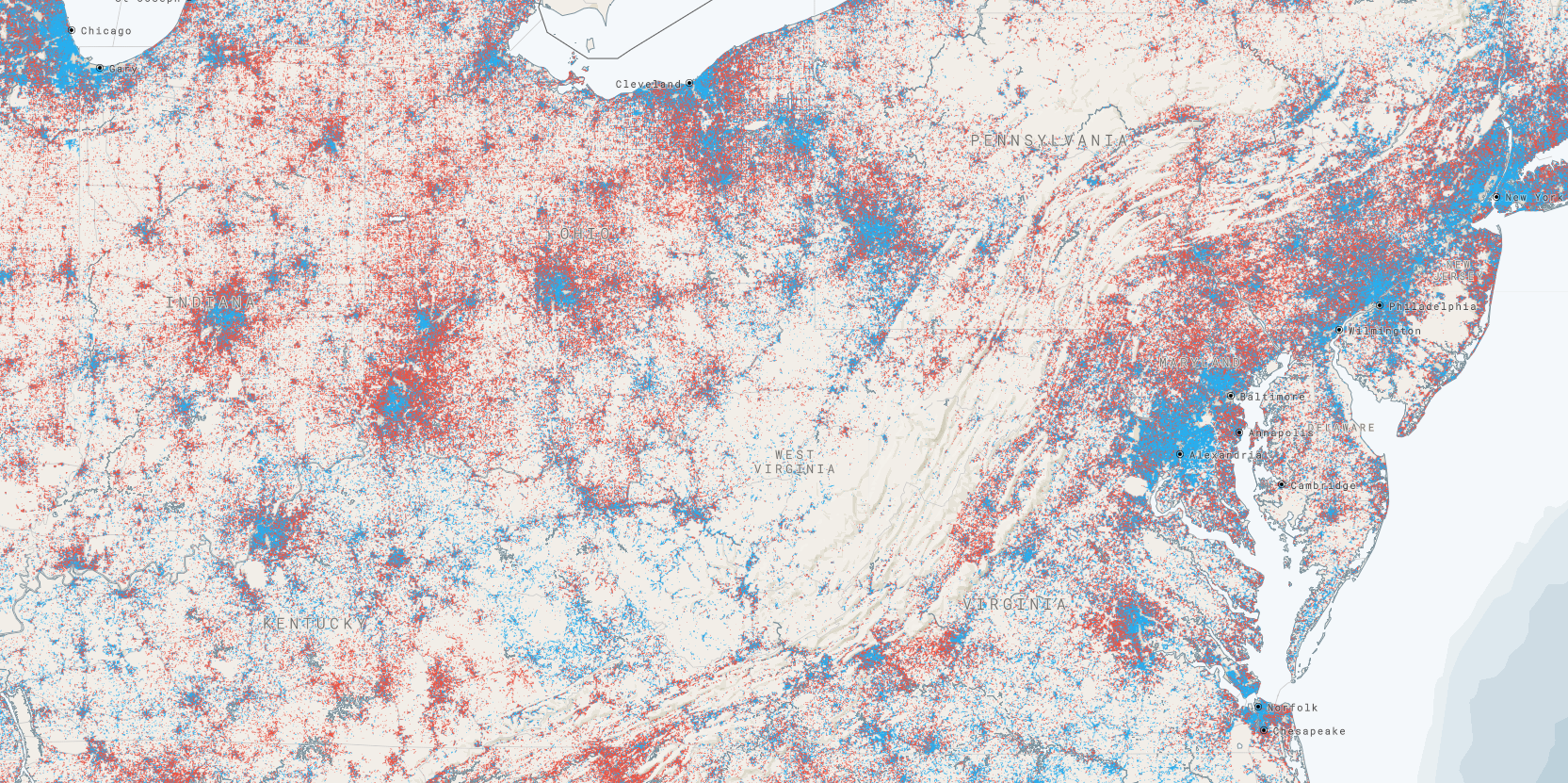Assistant Professor of Political Science, Boston University
Junior Faculty Fellow, Hariri Institute for Computing
2025 Andrew Carnegie Fellow
I study where people live and how where they live influences their politics.
At BU, I teach courses on American Politics and Quantitative Methodology.
Google Scholar | CV | Email
Academic Publications
- What is Ideological Capture and How Do We Measure It? Using Antitrust Reform to Understand Expert-Public Cleavages. Joint with Nicholas Short and Sophie Hill. Conditionally Accepted, Perspectives on Politics.
- City-Defined Neighborhood Boundaries in the United States. 2025. Joint with Stephen Ansolabehere, Ryan Enos, Ben Shair, Tyler Simko, and David Sutton. Nature Scientific Data. [Data; Cite].
- Priming Bias versus Post-treament Bias in Experimental Designs. Joint with Matthew Blackwell, Sophie Hill, Kosuke Imai, and Teppei Yamamoto. Forthcoming, Political Analysis. [Supporting Information; R package; Replication; Cite].
- Partisan Conversion Through Neighborhood Influence: How Voters Adopt the Partisanship of their Neighbors. 2025. Journal of Politics. (Covered by the New York Times). [Supporting Information; Replication; Cite].
- Forecasting Turnout. 2024. Joint with Stephen Ansolabehere, Kabir Khanna, Connor Halloran Philips, and Charles Stewart III. Harvard Data Science Review. [Replication; Cite].
-
Measuring and Modeling Neighborhoods. 2024. Joint with Cory McCartan and Kosuke Imai. American Political Science Review. [Survey tool; R package; Replication; Cite].
-
The Obama Effect? Race, First-time Voting, and Future Participation. 2023. Political Science Research and Methods. [Supporting Information; Replication; Cite].
-
How Local Partisan Context Conditions Pro-social Behaviors: Mask-Wearing During COVID-19. 2022. Joint with Ryan Baxter-King, Ryan Enos, Arash Naeim, and Lynn Vavreck. Proceedings of the National Academy of Sciences. [Supporting Information; Replication; Cite].
-
Locked Out of College: When Admissions Bureaucrats Do and Do Not Discriminate. 2022. Joint with Hanno Hilbig. British Journal of Political Science. [Supporting Information; Replication; Cite].
-
Resisting Broken Windows: The Effect of Neighborhood Disorder on Political Behavior. 2022. Joint with Michael Zoorob. Political Behavior. [Ungated; Supporting Information; Replication; Cite].
-
Childhood Cross-ethnic Exposure Predicts Political Behavior Seven Decades Later: Evidence from Linked Administrative Data. 2021. Joint with Ryan Enos, James Feigenbaum, and Shom Mazumder. Science Advances. (Covered by the Los Angeles Times, CNN, and the Daily Mail). [Supporting Information; Replication; Cite].
-
The Measurement of Partisan Sorting for 180 Million Voters. 2021. Joint with Ryan Enos. Nature Human Behaviour. (Covered by the New York Times, and The Atlantic). [Supporting Information; Replication; Cite].
-
Weakening Strong Black Political Empowerment: Implications from Atlanta’s 2009 Mayoral Election. 2014. Joint with Michael Leo Owens. Journal of Urban Affairs, 36:4, 663-681. [Cite].
Working Papers
- Bureaucratic Inertia or Legal Responsiveness? College Admissions Officers' Behavior Before and After the Affirmative Action Ban. Joint with Hanno Hilbig and Hunter Rendleman.
-
The Effect of Childhood Environment on Political Behavior: Evidence from Young U.S. Movers, 1992-2021. Joint with Enrico Cantoni, Sahil Chinoy, Martin Koenen, and Vincent Pons.
- Causes and Extent of Increasing Partisan Segregation in the U.S. -- Evidence from Migration Patterns of 212 Million Voters. Joint with Enrico Cantoni, Ryan Enos, Vincent Pons, and Emilie Sartre. [Supporting Information]. (Covered by the New York Times).
- Local Partisan Context Conditions Mental Health. Joint with Ryan Baxter-King, Ryan Enos, Arash Naeim, and Lynn Vavreck.
-
Partisan Segregation and Partisan Activation: How Geographic Polarization Increases Political Engagement.
Other Writing
- Do You Live in a Political Bubble? Joint with Gus Wezerek and Ryan Enos. New York Times.
- A Prescription for Change: Voter Registration in Emergency Rooms. Joint with Alister Martin. Harvard Kennedy School Review.

